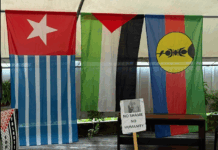
Journalists who report on environmental issues are encountering growing difficulties in many parts of the world, reports Reporters Without Borders.
According to the tally kept by RSF, 200 journalists have been subjected to threats and physical violence, including murder, in the past 10 years because they were working on stories linked to the environment.
Twenty four were murdered in Latin America and Asia — including the Pacific, which makes these two regions the most dangerous ones for environmental reporters.
From restrictions on access to information and gag suits to physical attacks, the work of environmental journalists and their safety are increasingly threatened.
RSF has denounced the obstacles to the right to information about ecological and climate issues and calls on all countries to recognise the vital nature of the work of environmental journalists, and to guarantee their safety.
Nearly half of the journalists killed in India in the past 10 years — 13 of 28 — were working on environmental stories that often also involved corruption and organised crime, especially the so-called “sand mafia,” which illegally excavates millions of tons of this precious resource for the construction industry.
Amazon deforestation
Journalists covering the challenges of deforestation in the Amazon are also constantly subjected to threats and harassment that prevent them from working freely.
The scale of the problem was highlighted in 2022 by the murder of Dom Phillips, a British reporter specialised in environmental issues.
“Regarding the environmental and climate challenges we face, the freedom to cover these issues is essential,” said RSF’s editorial director Anne Bocandé.
“RSF’s staff battles tirelessly to prevent economic and political interests from obstructing the right to information. Your generosity makes this fight possible.”
Pacific Media Watch collaborates with Reporters Without Borders.
- RSF’s annual World Press Freedom Index will be released on May 3 to provide a reality check on global press freedoms.











































